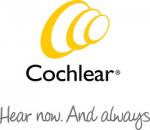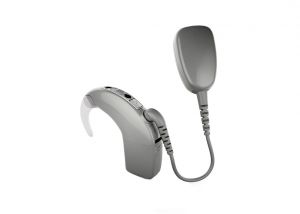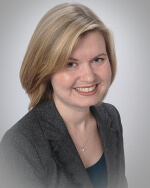|
www.HealthyHearing.com |
Cochlear hearing implants
Contributed by Mandy Mroz, AuD, Former President, Healthy Hearing https://www.healthyhearing.com/uploads/images/cochlear-implant-Nucleus7.jpg
 Cochlear has North American headquarters in Centennial, Colo., but its products are available worldwide. Having invented the world’s first cochlear implant more than 30 years ago, Cochlear is a pioneer in implantable solutions that help people of all ages hear better. Cochlear makes two different types of implantable devices for the American hearing care market: a cochlear implant and a bone-anchored hearing aid (Baha). Cochlear implants
sound processor. (Photo courtesy Cochlear.) Cochlear implants are an implantable hearing treatment for severe-to-profound hearing loss. Instead of delivering sound through the ear canal like traditional hearing aids, cochlear implants provide a sense of sound by stimulating the auditory nerve directly with an implanted electrode array. The two main components of a cochlear implant, the external sound processor and the implanted electrode array, are connected via a strong magnet. Cochlear currently makes two cochlear implant processors: the new Kanso 2 and the Nucleus 8. Both cochlear implant devices can be used for children or adults. The Kanso 2 sound processor sits behind the ear and includes direct streaming from both Apple® and Android™ devices. The company says it is also world's smallest off-the-ear sound processor. The device can be powered by a rechargeable battery if desired. For people who can benefit from having a cochlear implant in one ear and a hearing aid in the other, Cochlear and ReSound offer what they call smart bimodal hearing. Bimodal hearing can help make it easier to understand speech in noisy environments, as well as locate the sources of sounds occurring all around you. The Nucleus 8 works more like a traditional cochlear implant (worn behind the ear) and comes with slightly different features, many well-suited to kids. This sound processor can also be implemented as a hybrid solution, combining electrical stimulation of the cochlea with acoustic stimulation of a different portion of the cochlea. This allows the user to take advantage of residual hearing ability. A comparison guide between the Nucleus and the Kanso is available. Bone-anchored hearing aids (Bahas)
(Photo courtesy Cochlear.) Cochlear was first to market in the US with this sort of device, and trademarked the name “Baha” for their device. Other manufacturers refer to these devices as “bone-anchored hearing systems” or “BAHS.” The Baha 6 Max treats hearing loss through bone conduction of sound vibrations to the inner ear—in contrast to regular hearing aids, which amplify acoustic sounds that enter the ear canal. This hearing treatment helps people who have conductive or mixed hearing loss, single-sided deafness, malformed ears or chronically-draining ears. The Baha is made up of a titanium bone implant and an external sound processor. These devices can be used for children or adults. The sound processor is available in three power options to accommodate different degrees of hearing loss. All three processors feature Made for iPhoneTM technology to enable audio streaming from Apple devices, and some Android devices are compatible, too. Other smartphones can be streamed from an accessory called the phone clip. The regular and power sound processors sit off the ear, attached to the internal component through a physical clip onto an abutment that juts out from the implant or through a strong magnetic coupling. The super power sound processor includes a microphone that sits behind the ear, in addition to the off the ear portion that attaches to the internal component via physical or magnetic coupling. For children, Cochlear makes the Baha Start, a non-surgical bone conduction device. Osia SystemCochlear recently launched a new implantable product known as the Osia system. As the company explains, the system uses a Piezo Power™ transducer, which uses piezoelectric material. These devices work similarly to Baha devices. Depending on the person's hearing loss, an Osia or a Baha might be recommended. Talk to your hearing care professional to find out which would be a better fit for you. Learn more about CochlearSpecially trained audiologists and ENT physicians work together to implant, program and help you maintain these types of hearing treatments. Contact a clinic affiliated with Cochlear to learn more about bone-anchored hearing aids and cochlear implant solutions. Mandy Mroz, AuD, Former President, Healthy Hearing
|
Featured clinics near me
Hearing Health Solutions from Ohio ENT - Columbus
974 Bethel Rd Ste B
Columbus, OH 43214
Earzlink Hearing Care - Reynoldsburg
7668 Slate Ridge Blvd
Reynoldsburg, OH 43068

Find a clinic
Need a hearing test but not sure which clinic to choose?
Call 1-877-872-7165 for help setting up a hearing test appointment.


 Dr. Mandy Mroz earned her doctorate in audiology from the University of Florida. Mandy’s career is guided by her dedication to serving people with hearing loss and her past experience in hearing research, training and management.
Dr. Mandy Mroz earned her doctorate in audiology from the University of Florida. Mandy’s career is guided by her dedication to serving people with hearing loss and her past experience in hearing research, training and management.